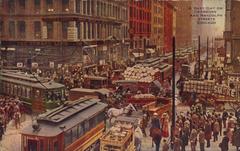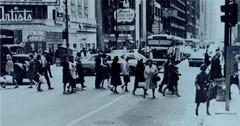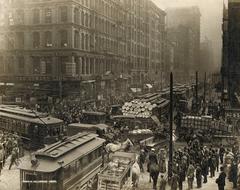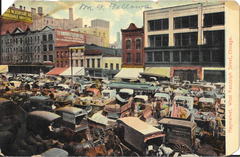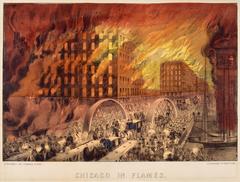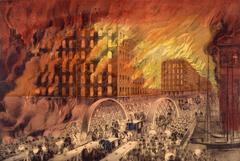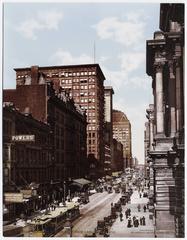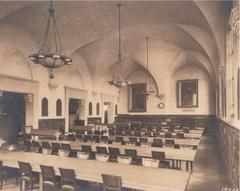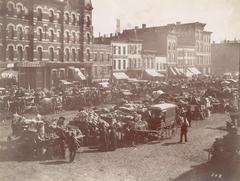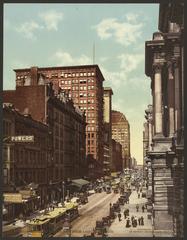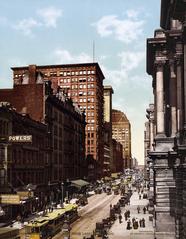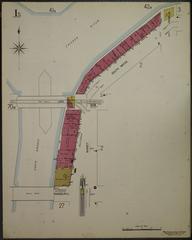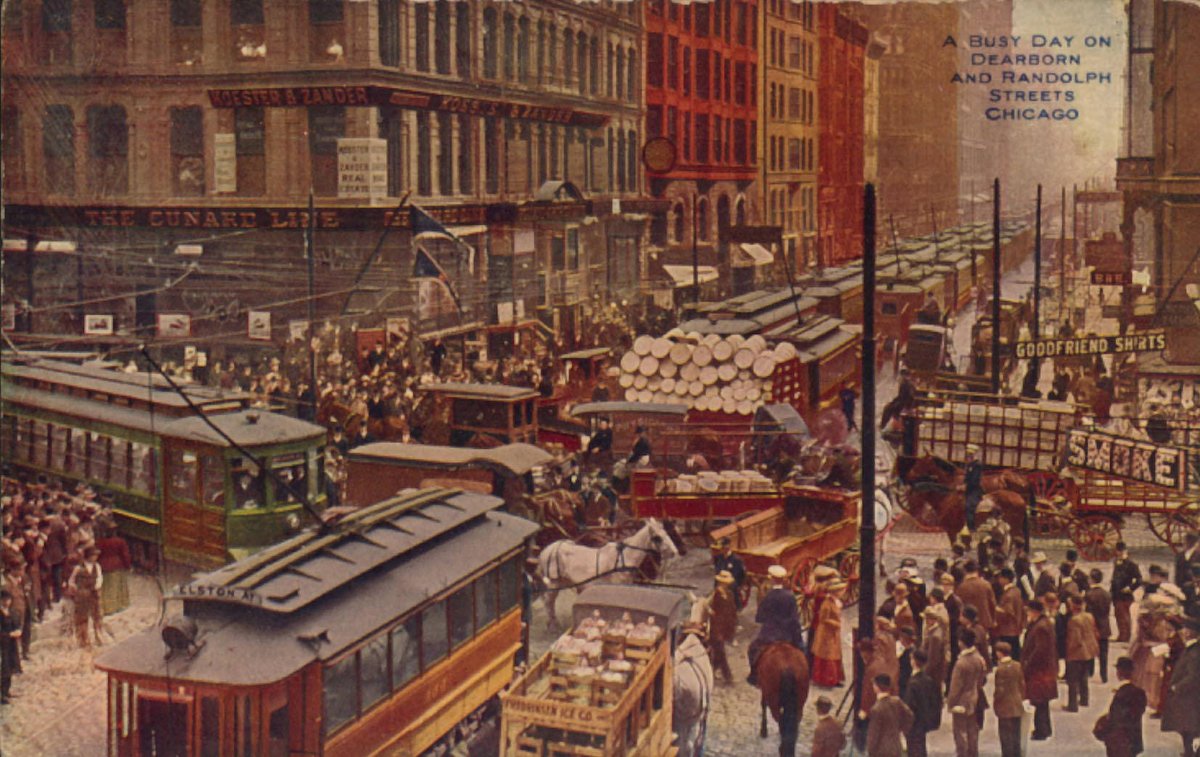
Randolph Street Chicago: Visiting Hours, Tickets, and Historic Attractions
Date: 15/06/2025
Introduction
Randolph Street in Chicago is a vital artery that weaves together the city’s rich commercial past, architectural distinction, and contemporary urban vibrancy. From its origins in the 1830s as a bustling market district to its current status as a premier hub for dining, cultural events, and historic exploration, Randolph Street offers both locals and visitors a multifaceted Chicago experience (Wikipedia; WTTW News). This guide provides a comprehensive overview of Randolph Street’s historical development, key attractions, events, visitor logistics, and practical tips to ensure a memorable visit.
Historical Overview
Early Development and Origins (1830s–1850s)
Randolph Street was established as one of Chicago’s original thoroughfares in the city’s earliest plat. Named for Randolph County, Illinois, it quickly became a crucial east–west connector and the site of the West Market Hall, which catalyzed a thriving marketplace for produce and goods by the mid-19th century (Wikipedia; WTTW News).
Growth as a Market District (1850s–1920s)
With the construction of West Market Hall, Randolph Street evolved into a major commercial corridor and food distribution center. The Fulton-Randolph Market District became the heart of Chicago’s produce and meatpacking trades, characterized by multi-story warehouses and commission houses (Chicago.gov PDF; Chicago.gov PDF).
Social and Cultural Significance
Randolph Street earned a colorful reputation as “Hairtrigger Block” in the 19th century due to its lively saloons and frequent altercations (Wikipedia). It attracted a diverse mix of residents and played a role in major events like the Haymarket Affair, a turning point in labor history (Neighbors of West Loop; Chicago Architecture Center).
Architectural Evolution and Preservation
The area’s architecture reflects its industrial and commercial heritage, with terra cotta facades, large loading doors, and open interiors. Most buildings date from 1880 to 1929, and the district’s landmark status since 2015 ensures ongoing preservation of its historic character (Chicago.gov).
Transition and Modern Revitalization (Late 20th Century–Present)
As traditional markets waned in the mid-20th century, a wave of revitalization transformed Randolph Street into Chicago’s celebrated “Restaurant Row.” The arrival of tech companies, art galleries, and new residents has cemented the neighborhood’s reputation as a vibrant destination (Chicago Architecture Center; Neighbors of West Loop).
Visitor Information
Visiting Hours
- Randolph Street: Open 24/7 as a public street.
- Restaurants & Shops: Typically open from 10:00 AM to 10:00 PM; hours vary.
- Cultural Venues: The Chicago Cultural Center is open Monday–Saturday, 9 AM–7 PM; Sunday, 10 AM–5 PM (Chicago Cultural Center).
- Festivals & Markets: Hours vary by event; check official websites for details.
Tickets
- Street Access: Free.
- Restaurants & Shops: No tickets required.
- Events: Special events like the Randolph Street Market Festival may be ticketed (Randolph Street Market Festival). Taste of Randolph Festival is free with suggested donation (Taste of Randolph).
Getting There
- Public Transit: Take the CTA Green or Pink Lines to Morgan Street station; numerous bus routes serve the area.
- Parking: Limited availability; public transit or ride-sharing is recommended.
Accessibility
- Most sidewalks and venues are wheelchair accessible; check with individual businesses for specific accommodations.
Guided Tours
- Walking tours highlighting history, architecture, and culinary highlights are available through local tour operators.
Photography Tips
- Early morning and evening provide the best light for photos of historic facades and bustling nightlife.
Notable Events and Ongoing Traditions
- Taste of Randolph Festival: An annual June event featuring food, live music, and local vendors, drawing tens of thousands of visitors (Block Club Chicago).
- Randolph Street Market Festival: Multiple weekends per year with 125+ vendors offering antiques, art, and food (Randolph Street Market Festival).
- Ongoing: Art installations, food tours, and community events throughout the year.
Randolph Street Attractions
Culinary Destination: Restaurant Row
Randolph Street’s Restaurant Row (Halsted to Ogden) is home to a concentration of Michelin-starred restaurants, gastropubs, and casual cafes (Chicago’s Property Shop). Notable venues include Girl & the Goat, Formento’s, and Au Cheval, offering a variety of global and locally inspired cuisine.
Architectural Landmarks
- Fulton-Randolph Market District: Recognized for its preserved industrial architecture and vibrant adaptive reuse (Chicago.gov).
- The Bell (Illinois Bell Building): A Chicago landmark representing mid-century modern design, located at 225 West Randolph (NGE News).
Nearby Attractions
- Millennium Park: Just east of Randolph, home to Cloud Gate (“The Bean”) and cultural programming (Chicago.gov).
- Chicago Cultural Center: A historic, architectural, and cultural landmark, free to visit (Chicago Cultural Center).
- Art Institute of Chicago and the Riverwalk: Accessible on foot from Randolph Street (Timeout Chicago).
Shopping, Nightlife, and Urban Lifestyle
- Boutique shopping, art galleries, and nightlife venues are abundant near Randolph and Michigan (200 S Michigan).
Chicago Cultural Center: Visiting Hours, History, and Tips
About the Chicago Cultural Center
Built in 1897 as Chicago’s central library, today the Cultural Center is renowned for its stunning Tiffany stained-glass dome, architectural grandeur, and rotating exhibitions. It is a hub for free concerts, art shows, and public events.
- Address: 78 East Washington Street
- Hours: Monday–Saturday 9 AM–7 PM; Sunday 10 AM–5 PM (confirm hours before visiting)
- Admission: Free (Chicago Cultural Center)
- Accessibility: Fully ADA-compliant
Highlights
- Guided Tours: Free, offered on weekends and during special events; reservations recommended.
- Events: Check the official events calendar.
- Nearby Dining: Randolph Street’s Restaurant Row is within walking distance, offering exceptional post-visit dining options (Time Out Chicago’s West Loop Guide).
Practical Visitor Tips
- Reservations: Book dining in advance, especially during festivals (Chicago’s Property Shop).
- Dress for Weather: Chicago’s climate varies; layer for comfort (The Savvy Globetrotter).
- Transportation: Use CTA or ride-sharing; parking is limited.
- Safety: The area is lively and generally safe; standard city precautions apply (Timeless Travel Steps).
Frequently Asked Questions (FAQs)
Q: What are Randolph Street’s visiting hours?
A: Randolph Street is open 24/7; individual venues and events have varied hours.
Q: Is there an admission fee for Randolph Street or its markets?
A: No ticket is required for general access; some festivals and special events may be ticketed.
Q: How do I get there by public transportation?
A: CTA Green/Pink Line to Morgan; several bus routes serve the area.
Q: Are there guided tours?
A: Yes, several local operators offer tours focusing on history, architecture, and food.
Q: Is Randolph Street accessible?
A: Yes, but check with specific venues for detailed accessibility features.
Q: Is the Chicago Cultural Center free to visit?
A: Yes, admission is free and it is open daily, with occasional exceptions for special events.
Q: Can I take photographs?
A: Photography is generally allowed, but restrictions may apply during exhibitions.
Visuals and Media
- Include high-quality images of Randolph Street’s dining, festivals, The Bell building, and murals.
- Use descriptive alt tags such as “Randolph Street Chicago historic buildings” and “Chicago Cultural Center stained-glass dome” to improve SEO.
Explore More Chicago Historical Sites
Summary & Final Tips
Randolph Street is a microcosm of Chicago’s evolution—melding historical legacy with modern culinary and cultural innovation. Careful preservation of its architectural character, combined with a robust calendar of events and festivals, ensures the area remains a vibrant, accessible, and welcoming destination. Plan ahead, make reservations, and consider using the Audiala app for real-time updates. Whether you’re drawn by food, history, or urban culture, Randolph Street offers an authentic Chicago experience (Randolph Street Market Festival; Choose Chicago; Block Club Chicago).
Sources and Official Links
- Randolph Street, Wikipedia
- Ask Geoffrey: A Brief History of Fulton Market, WTTW News
- Fulton Randolph Market District Expanded Summary, City of Chicago
- Final Designation Report, City of Chicago
- West Loop History, Neighbors of West Loop
- 5 Interesting Facts About West Loop, Chicago Architecture Center
- Fulton Randolph Market Historic District, City of Chicago
- Randolph Street Market Festival Official Site
- Taste of Randolph Festival 2025, Block Club Chicago
- Chicago Cultural Center, City of Chicago
- Choose Chicago Visitor Information
- Chicago’s Property Shop - Restaurant Row Guide
- Where Is The Market - Randolph Street Market
- 200 South Michigan - Randolph & Michigan Guide
